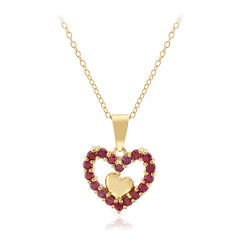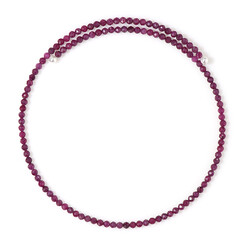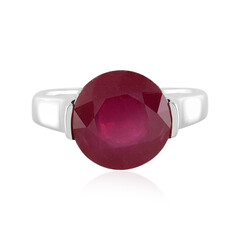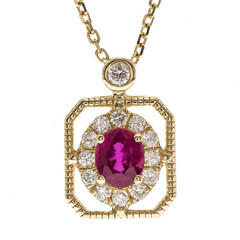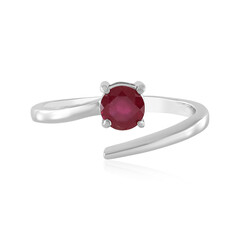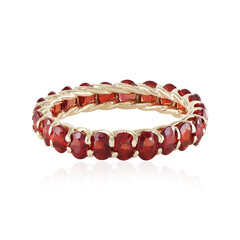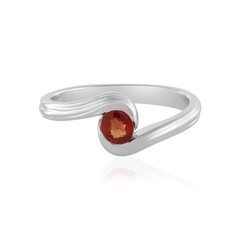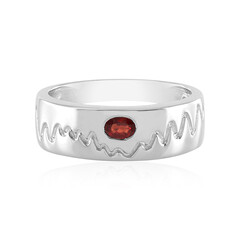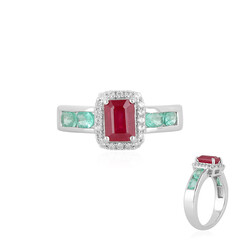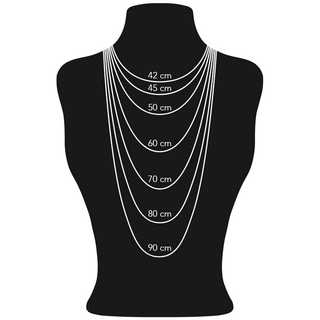Incredible prices, huge variety
Your expert for certified gemstone jewellery
Orders from €79 will receive free shipping
Shipping free for new customers

Filter
Ruby Jewellery
Rubies have been coveted by Royals, from the Maharajas to the British Royal Family for hundreds of years and have been used generously in their jewels. These pieces have often included sceptres; necklaces, earrings, bracelets, crowns and headpieces and most can be seen in the major museums. The great thing about Rubies is that although they are stunning, precious, and one of the most popular stones in the world, they are accessible. Gemstone lovers of all walks of life can own a piece of high-quality ruby jewellery for a reasonable price with Juwelo.
The name Ruby originates from the Latin word 'ruber' meaning red: the medieval Latin adjective 'rubinus' was derived from 'ruber', eventually changing to the noun for red corundum. From there, rubinus was shortened to ruby.
The blood-red gem has been coveted by noblemen and the common man alike. Like many gems, it has been believed to hold magical powers of protection. Early cultures were drawn to the fiery intensity of ruby believing that it held life-giving power, because of stone’s intense dark red colour's similarity to life-giving blood. Blood red rubies equaling the power of life.
History of Ruby Jewelry
Maybe you have heard Ruby referred to as the 'King of precious stones'? Interestingly this reference is rooted in the word ratnaraj, which is ancient Sanskrit for that saying. Ruby is mentioned four times in the Bible and referred to as being endowed with beauty and wisdom. Ruby is as well included by Roman Scholar Pliny the Elder in his book Natural History, describing the hardness and density of the stone.
The Mogok area of Myanmar has been inhabited since the palaeolithic era. It is assumed that these peoples found and used rubies for protective amulets, tools, and decoration during that time. Europeans first enjoyed the famously beautiful stones in the 15th century.
Myanmar, formerly known as Burma maybe one of the oldest human settlements on earth and has been a prime location of red corundum, however, Myanmar has been under a conflicted military regime of one sort or another for a very long time. This is a human tragedy for the people of former Burma. This also affected the archaeologists and historians attempting to document the ancient history of Ruby as well as the international ruby market, because of sanctions. Burmese rubies are known for being absolutely stunning and have slowly become available again after the White House lifted sanctions against Myanmar in 2016. The world’s eyes are still looking at the regime’s treatment of its people including the workers of the mines.
Although this society, as well as Sri Lanka, have been known as the oldest sources of the stones, the most ancient Rubies actually come from the continent of Africa. In his book “Ruby & Sapphire: A Gemologist’s Guide”, Richard Hughes refers to critical times in history in which tectonic movement created large-scale shifts, producing mineral-rich regions, called orogenic belts. The Pan African orogeny happened around 600 million of years ago, creating gem deposits in Kenya, Tanzania, Mozambique, Madagascar, Sri Lanka and southern India.
Hughes talks about the Himalayan region colliding with the Asian continent 45 to 5 million years ago, creating ruby and sapphire deposits in Afghanistan; Tajikistan, Pakistan, northern India, Nepal, Myanmar, China and Vietnam.
Also, of note, the writer mentions that the ruby discovery in Mozambique in the late 2000s was huge because of the fact that the fine stones having similar colour, and even rivalling the coveted fine Burmese rubies. It is estimated that Mozambique produces 85 percent of the rubies on the market today and indeed many of our stones at Juwelo, come from the beautiful southeast African country of Malawi.
Queen Elizabeth Taylor & her Jewels
When we think of famous Ruby jewellery collections, the glamorous actress Hollywood Elizabeth Taylor quickly comes to mind. Taylor was well known for her diamond, emerald and ruby collections. In 1968 Richard Burton gave her quite a Christmas gift. The ring to top all rings. In a halo setting of 18K gold with diamonds surrounding sits an 8.24-carat ‘pigeon blood’ Burmese ruby, cut in an oval. The ring was designed by Van Cleef and Arpels.
There are many a modern starlet wearing gemstone jewellery of note but we will stick with the classic old Hollywood style of Elizabeth Taylor for now. Another incredible piece in her collection was the Ruby and Diamond Necklace by Cartier. The necklace was a gift from Mike Todd, Elizabeth’s third husband. The necklace featured seven oval rubies set with round and baguette diamonds forming a lattice framework and finished with a ruby and diamond clasp, all set in 18K platinum gold. After Taylor's death, her estate auctioned off the collection off for charity.
Red - The colour of Passion
Red is an intense and provoking colour which is probably why so many are attracted to it. There nothing quite like having a ruby red stone somewhere on your body. It truly does have a bit of a magical power felling. kind of like the lady in the red dress. At Juwelo our Ruby jewellery is set in necklaces, bracelets, rings, pendants, earrings using stones from African; Cambodia and Sri Lanka. You are bound to find a red gemstone jewellery piece to your liking.
Ruby is the birthstone for July babies.




